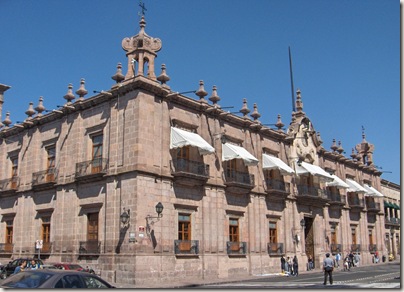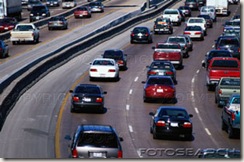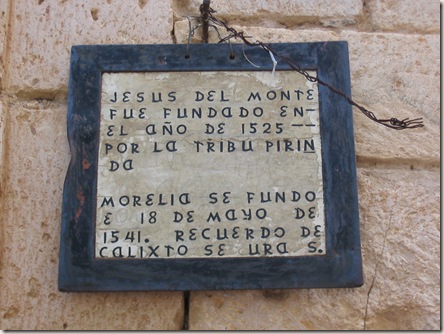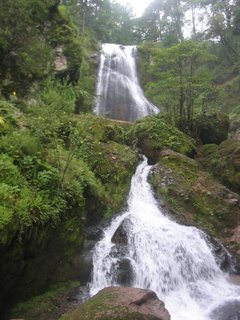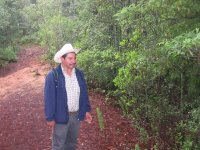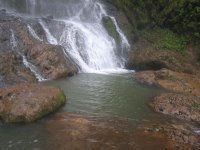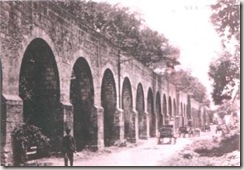 Here is how the aqueduct appeared in 1908. From the look of the overhanging tree branches, it appears as though horse and buggy traffic ran along the Bosque side only.
Here is how the aqueduct appeared in 1908. From the look of the overhanging tree branches, it appears as though horse and buggy traffic ran along the Bosque side only.
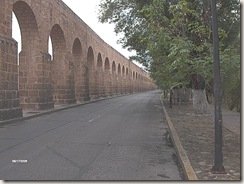 Now in 2005 in almost the same spot, with two lane traffic running along either side of the landmark. This photo must have been taken at sunrise, because it would be rare to not see cars lining this avenue now. Either that or protestors were blocking traffic, yeah, that's it !
Now in 2005 in almost the same spot, with two lane traffic running along either side of the landmark. This photo must have been taken at sunrise, because it would be rare to not see cars lining this avenue now. Either that or protestors were blocking traffic, yeah, that's it !
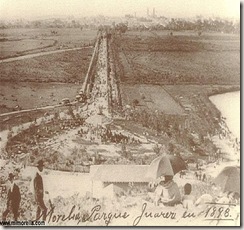 I find these two photos of the Calzada Juarez intriguing. As debate roils these days regarding controlling the growth of our fine city, and preserving the "pulmones" (lungs) of the area (aka forests).
I find these two photos of the Calzada Juarez intriguing. As debate roils these days regarding controlling the growth of our fine city, and preserving the "pulmones" (lungs) of the area (aka forests).
The contrast between this 1898 photo above and the more recent photo below show much more vegetation now. Somet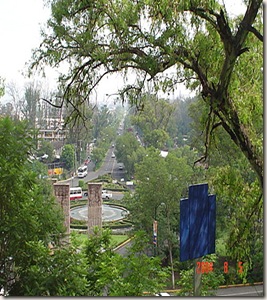 imes people's embellished recollections of times gone by are not all what they are cracked up to be. In all fairness, the area in the old photo remained a flood plain for the Rio Chiquito well into the 20th century. The lake that shows up in the old photo is probably the duck pond in the present day zoo. If you expand the photos and look closely through the tree branches, you will be able to make out the shadows of the Cathedral Spires....the one constant in a world of change.
imes people's embellished recollections of times gone by are not all what they are cracked up to be. In all fairness, the area in the old photo remained a flood plain for the Rio Chiquito well into the 20th century. The lake that shows up in the old photo is probably the duck pond in the present day zoo. If you expand the photos and look closely through the tree branches, you will be able to make out the shadows of the Cathedral Spires....the one constant in a world of change.
The Cathedral in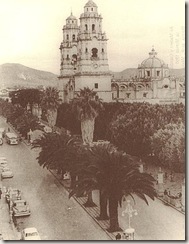 1950
1950  .........and in 200?
.........and in 200?
(above) Palacio del Gobierno, year 19??, take a guess....how fast do Imperial Palm trees grow? They appear a lot taller in 1950.
(above) El Palacio as it stands today, ....refreshingly clear of protestors...and sadly, clear of palms.
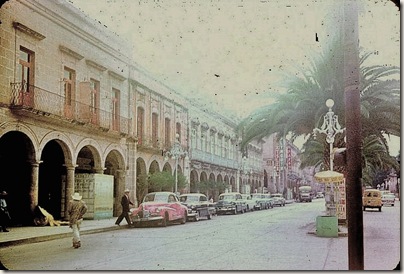
(Above) Los Portales in Morelia...year? 195??
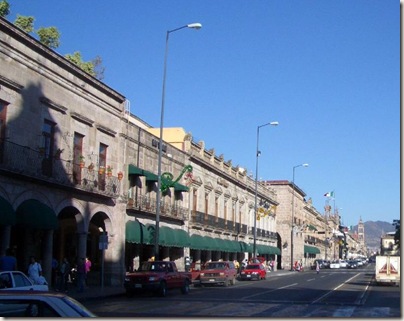
(above) and as they look today....

